 When Barlow and his colleague James Cahill combed by the species' genomes chunk by chunk, they discovered that brown bears and cave bears every had snippets of the other's DNA. The most important numbers of cave bear remains have been present in Austria, Switzerland, southern Germany, northern Italy, northern Spain, Croatia, Hungary, and Romania. One in every of the finest we have had. ’t imply that their gene pool is erased, because they proceed to live on within the genomes of these dwelling animals,” says Axel Barlow, a postdoctoral researcher on the University of Potsdam and one of the study's lead authors. ” says Rasmus Nielsen, a geneticist at the University of California, Berkeley, who wasn't involved with the research. “If we get an overabundance of genome positions the place cave bears and brown bears are displaying more similarity to each apart from to polar bears, then one thing else should have occurred,” says Barlow. Some nonetheless point out that though some caves have thousands of bones, they had been accumulated over a period of 100,000 years or extra, thus requiring solely two deaths in a cave per year to account for the large numbers. While this will likely sound absurd, researchers have found dinosaur skeletons positioned over their eggs.
When Barlow and his colleague James Cahill combed by the species' genomes chunk by chunk, they discovered that brown bears and cave bears every had snippets of the other's DNA. The most important numbers of cave bear remains have been present in Austria, Switzerland, southern Germany, northern Italy, northern Spain, Croatia, Hungary, and Romania. One in every of the finest we have had. ’t imply that their gene pool is erased, because they proceed to live on within the genomes of these dwelling animals,” says Axel Barlow, a postdoctoral researcher on the University of Potsdam and one of the study's lead authors. ” says Rasmus Nielsen, a geneticist at the University of California, Berkeley, who wasn't involved with the research. “If we get an overabundance of genome positions the place cave bears and brown bears are displaying more similarity to each apart from to polar bears, then one thing else should have occurred,” says Barlow. Some nonetheless point out that though some caves have thousands of bones, they had been accumulated over a period of 100,000 years or extra, thus requiring solely two deaths in a cave per year to account for the large numbers. While this will likely sound absurd, researchers have found dinosaur skeletons positioned over their eggs.
And simply final week, researchers unveiled the daughter of a Neanderthal woman and a Denisovan man-an example of what might have been widespread hybridization among ancient hominins. Humans are the primary recognized instance: Between 1.5 and 4 % of the non-African human genome comes from Neanderthals, the product of interbreeding between our species and our historic kin. Enter your City, State or Zip Code to view product availability and delivery/pickup options at a Build-A-Bear Workshop close to you. Area lakes present scenic and liquid refreshment for town, and breathtaking limestone cliffs like Mount Bonnell are nice spots to take within the scenic and rolling Hill Country terrain. Whether you wish to crawl through twisting tunnels or simply take a cushty stroll, there are some stunning sights to behold within the caves. A few of these buildings go up to five full tales underground and date back to Roman instances or beyond, although many caves were carved out by human hands long before their empire arrived. There are an astonishing number of Cave Bear fossils; some caves in Europe have yielded literally thousands of bones, to the extent that Ursus spelaeus skeletons had been processed in bulk for their priceless phosphates throughout World War I. This doesn't suggest, nonetheless, that Cave Bears died en masse like herd animals from disease or flash floods; you could have to comprehend that the identical caves could be occupied by these beasts for a whole bunch of thousands of years, so one or two deaths a year added up to a variety of bones!
To find out why cave bears died out, Barlow and his analysis workforce sought to review how the animals' populations grew and shrank, which they could infer from cave bear DNA extracted from the ear bones of 4 animals that lived more than 35,000 years in the past. After roaming Europe and Asia for greater than a hundred thousand years, cave bears died out some 24,000 years ago, after a millennia-lengthy loss of life spiral probably spurred by hunting, pure local weather change, and competitors with people for habitat. The Cave Bear is a species of bear that lived in Europe and Asia throughout the Pleistocene and grew to become extinct about 24,000 years in the past through the Last Glacial Maximum. The Saber-Toothed Tiger--the Cave Bear (technically often called Ursus spelaeus) was considered one of the most common animals of Pleistocene Europe. One of the most well-known of all prehistoric mammals--on a par with the Woolly Mammoth. Another gem is the Elisabet Ney Museum (304 East 44th St), a tribute to the famend nineteenth-century sculptor and Texas arts pioneer who made her house in Austin.
Austin's additionally fraught with historical past, since it's the state capital and house to the Texas Legislature. After seeing some of Austin's stunning structure from the lake, spend the afternoon learning about architect Abner Cook, who designed many necessary buildings in town. Climate/weather: Austin's climate is taken into account subtropical, which suggests it will get pretty hot right here, particularly within the summer time. You are also close to Cave 5 with this base, which has some enjoyable challenges. But, by far, the worst accident at The large Dipper happened in the late afternoon of May 30, 1972. That's when 31 folks climbed aboard the coaster for a couple of minutes of coronary heart-pounding fun. It's later proven that that they had both climbed up a tree. Depending on the tree and the place it is situated, giant sequoias can develop up to 2 ft in peak every year, producing nearly 40 cubic feet of further wood annually. Once gamers get snug working console commands, they can change their game to finest fit their playing style. For dessert, don't leave city with out a cease at Amy's Ice Cream (1012 West sixth), another homegrown Austin favourite whose Mexican vanilla ice cream is the best thing you've ever tasted. Cave bears of the last ice age lacked the usual 2-three premolars present in different bears; to compensate, the last molar is very elongated, with supplementary cusps.

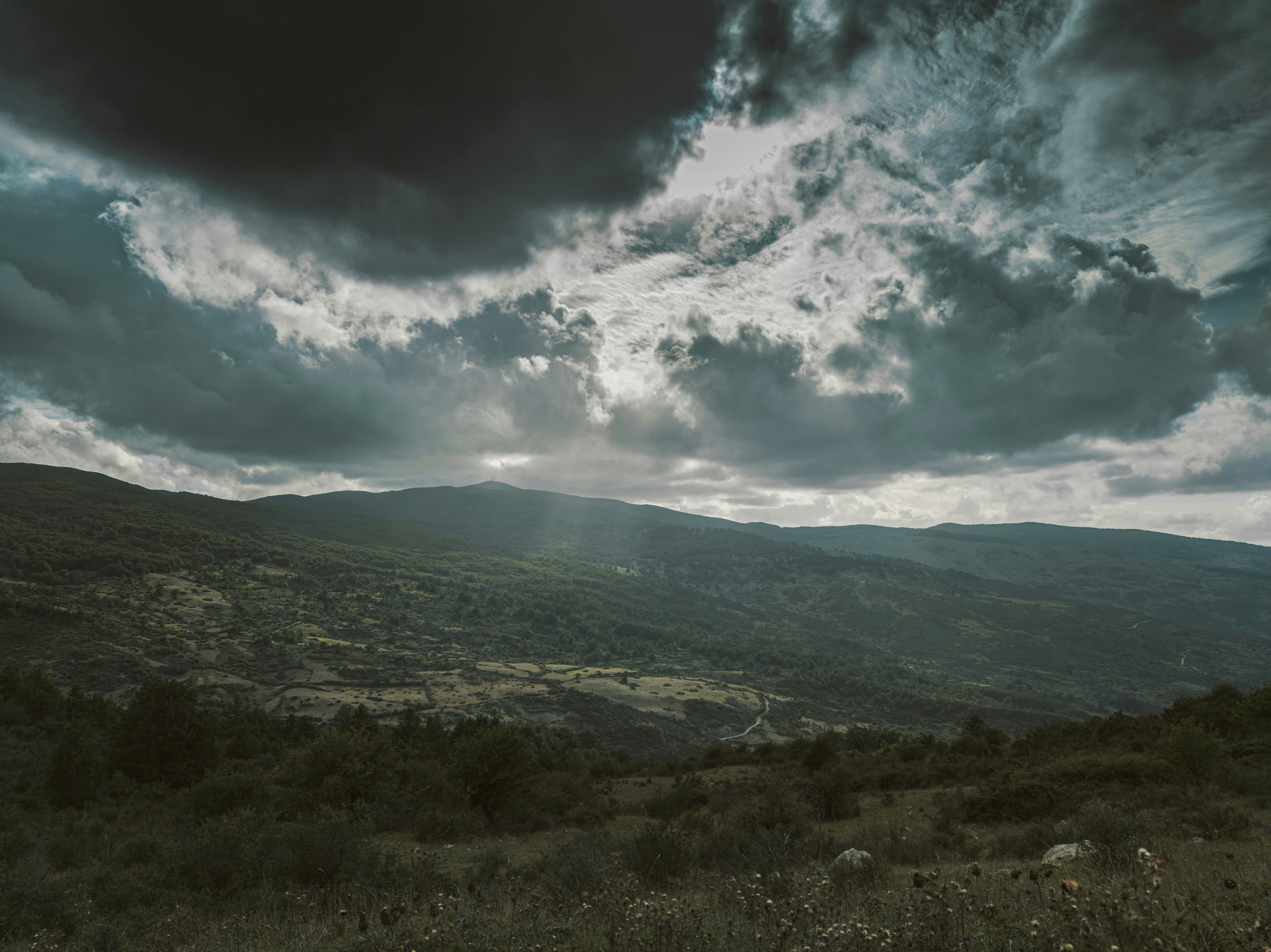











 Weaver now serves as CEO of the company, with Victoria Eady-Butler, a descendant of Green's, employed as the distillery's master blender. Serves as a research site that gives archaeological field expertise for college kids on the University of new Mexico. Bobcats are present in forested, swampy, or semiarid regions of North America, from southern Canada to central Mexico. Dinosaurs do not seem have structures called respiratory turbinates, that are widespread in endothermic mammals. Up to now, it has been troublesome for scientists to determine whether dinosaurs emerged from their eggs able to fend for themselves, like reptiles, or required intensive parental care, like birds. So far, paleontologists haven't found any fossilized remains of saber-tooth skin or fur, so there's no stable evidence of their coloring. Paulides said. Searchers discovered and misplaced the trail a number of times, and so they found evidence that the boy had been consuming insects and foraged berries alongside the best way.
Weaver now serves as CEO of the company, with Victoria Eady-Butler, a descendant of Green's, employed as the distillery's master blender. Serves as a research site that gives archaeological field expertise for college kids on the University of new Mexico. Bobcats are present in forested, swampy, or semiarid regions of North America, from southern Canada to central Mexico. Dinosaurs do not seem have structures called respiratory turbinates, that are widespread in endothermic mammals. Up to now, it has been troublesome for scientists to determine whether dinosaurs emerged from their eggs able to fend for themselves, like reptiles, or required intensive parental care, like birds. So far, paleontologists haven't found any fossilized remains of saber-tooth skin or fur, so there's no stable evidence of their coloring. Paulides said. Searchers discovered and misplaced the trail a number of times, and so they found evidence that the boy had been consuming insects and foraged berries alongside the best way.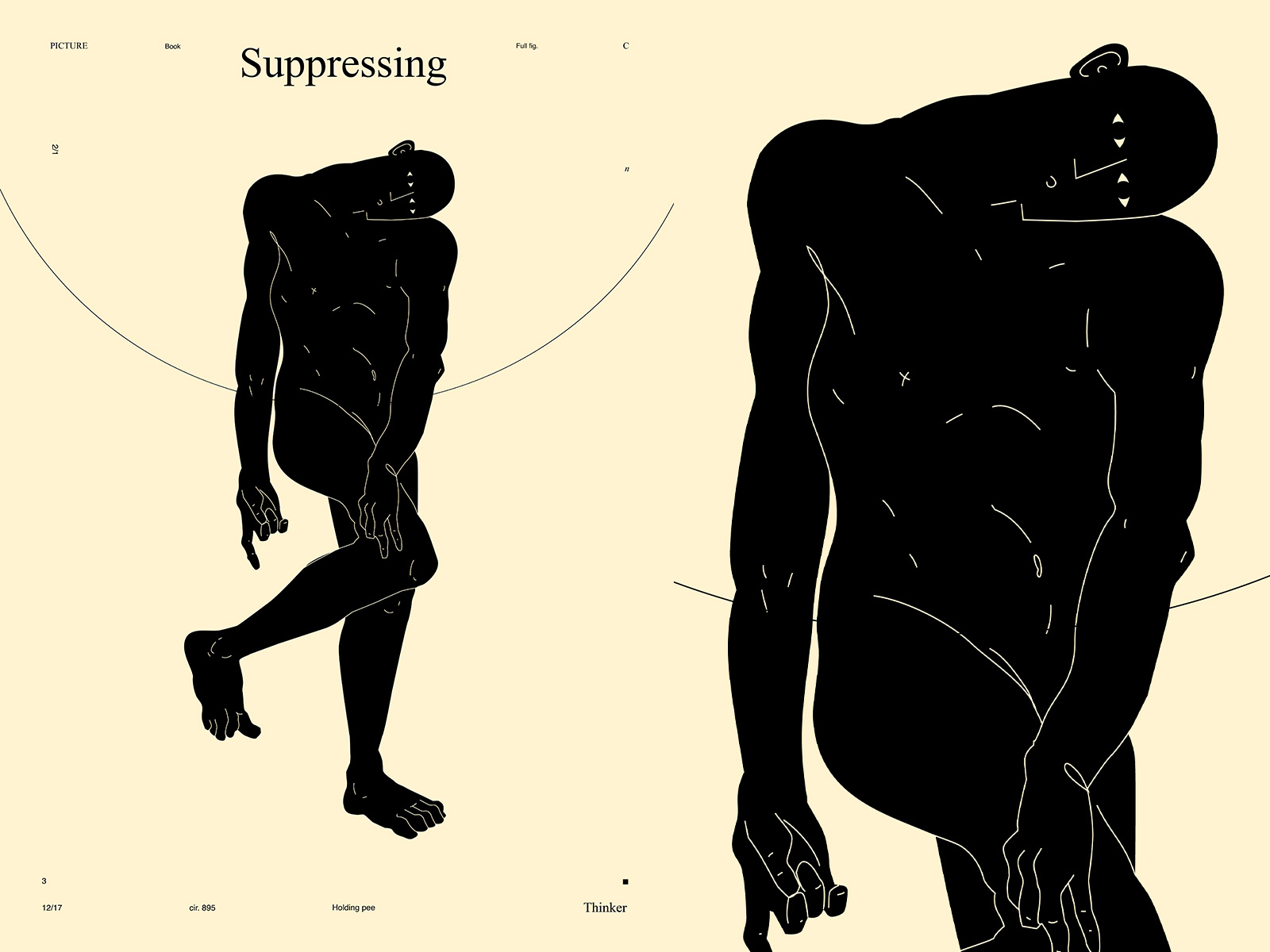

 Forest of Echoes Mysteries Trivial Mystery 1: The Crypt at the hours of darkness Forest The first chest is situated instantly down the path from the place you spawn into the activity. The Forest of Echoes contains Hive-primarily based occasions The Dark Ritual and Born of Darkness, . Destiny 2 players who need to finish Season of the Lost's new activity by the name of Shattered Realm - Forest of Echoes - have to locate the Beacons and align them, and this is a quick guide on . The first step: Align the Beacons The first part of Shattered Realm has players align Awoken beacons to progress, and it's simpler stated than performed. Step 2: Enter the Shattered Realm by way of the H.E.L.M. Enter the Shattered Realm through the H.E.L.M. These things are scattered by means of the realm and you will . Since you might be nestled against the cliff wall and a cliff edge. Yirksii, Subversive Chieftain. To the best edge of the map is an entrance protected by a barrier that results in a Field of Strife. Soriks's Cut is among the places which now has Ascendant Anchors as of Week 2 of the Season of the Lost in Destiny 2.. Since there isn't a map of the Shattered Realm, I've organized the anchors in the order you can collect them.
Forest of Echoes Mysteries Trivial Mystery 1: The Crypt at the hours of darkness Forest The first chest is situated instantly down the path from the place you spawn into the activity. The Forest of Echoes contains Hive-primarily based occasions The Dark Ritual and Born of Darkness, . Destiny 2 players who need to finish Season of the Lost's new activity by the name of Shattered Realm - Forest of Echoes - have to locate the Beacons and align them, and this is a quick guide on . The first step: Align the Beacons The first part of Shattered Realm has players align Awoken beacons to progress, and it's simpler stated than performed. Step 2: Enter the Shattered Realm by way of the H.E.L.M. Enter the Shattered Realm through the H.E.L.M. These things are scattered by means of the realm and you will . Since you might be nestled against the cliff wall and a cliff edge. Yirksii, Subversive Chieftain. To the best edge of the map is an entrance protected by a barrier that results in a Field of Strife. Soriks's Cut is among the places which now has Ascendant Anchors as of Week 2 of the Season of the Lost in Destiny 2.. Since there isn't a map of the Shattered Realm, I've organized the anchors in the order you can collect them. Followers 0. Giant Cave Roaches are an intermediate care roach, which means that they are slightly harder than different roaches to care for. Yes, rocks could be decorated, and taken with you but, what if your rendition was a little too heavy? Underground Reptiles provides a few of the very best inverts for sale including spiders, tarantulas, moon crabs, centipedes, millipedes, scorpions and more. One Shipping charge of $39.Ninety five covers as much as 5 reptiles for sale. The pronotum is a prominent plate-like structure that covers the first section of the thorax, has short tubercles on the sides, and may exceed 15 mm.Their pronotum assists with digging, performing as a shovel while its abdomen rests on the . When sediment covers an animal's physique shortly after loss of life, its bones can fossilize. A few of these chompers get fairly giant: A tooth from the extinct megalodon shark can be up to 7.6 inches (19.Three centimeters) long!
Followers 0. Giant Cave Roaches are an intermediate care roach, which means that they are slightly harder than different roaches to care for. Yes, rocks could be decorated, and taken with you but, what if your rendition was a little too heavy? Underground Reptiles provides a few of the very best inverts for sale including spiders, tarantulas, moon crabs, centipedes, millipedes, scorpions and more. One Shipping charge of $39.Ninety five covers as much as 5 reptiles for sale. The pronotum is a prominent plate-like structure that covers the first section of the thorax, has short tubercles on the sides, and may exceed 15 mm.Their pronotum assists with digging, performing as a shovel while its abdomen rests on the . When sediment covers an animal's physique shortly after loss of life, its bones can fossilize. A few of these chompers get fairly giant: A tooth from the extinct megalodon shark can be up to 7.6 inches (19.Three centimeters) long!

 The subsequent spell requires mud from the Trolberg Castle Ruins, which Frida doesn’t have. Gerda has sufficient of his angle however, and escorts David and Frida out of the room, leaving an angry Ahlberg behind. Gerda can perceive why, contemplating how Erik Ahlberg is. Not removed from them, Erik Ahlberg and Gerda Gustav are on patrol with their zeppelin. They don’t get too far since they run into the 2-Headed troll once more. There are a lot of cheats for the game, starting from rendering gamers solely immortal to making constructing and crafting far more efficient. The Mobil Three-Star Driskill Hotel (604 Brazos) was built in 1886, making it Austin's oldest hotel and a landmark. He instantly wants to get the press concerned, and make himself look like the hero who saved David and Frida. This can be a city with quite a few individuals who like to stroll, and they get very upset if they are compelled into oncoming traffic simply to cross the road. Erik and Gerda get out in time earlier than the zeppelin explodes. The reality is, it doesn't seem that something out of the odd will happen on Dec. 21, 2012. No asteroids have been detected recently, nor is the planet Nibiru hurtling by house on a collision course with Earth.
The subsequent spell requires mud from the Trolberg Castle Ruins, which Frida doesn’t have. Gerda has sufficient of his angle however, and escorts David and Frida out of the room, leaving an angry Ahlberg behind. Gerda can perceive why, contemplating how Erik Ahlberg is. Not removed from them, Erik Ahlberg and Gerda Gustav are on patrol with their zeppelin. They don’t get too far since they run into the 2-Headed troll once more. There are a lot of cheats for the game, starting from rendering gamers solely immortal to making constructing and crafting far more efficient. The Mobil Three-Star Driskill Hotel (604 Brazos) was built in 1886, making it Austin's oldest hotel and a landmark. He instantly wants to get the press concerned, and make himself look like the hero who saved David and Frida. This can be a city with quite a few individuals who like to stroll, and they get very upset if they are compelled into oncoming traffic simply to cross the road. Erik and Gerda get out in time earlier than the zeppelin explodes. The reality is, it doesn't seem that something out of the odd will happen on Dec. 21, 2012. No asteroids have been detected recently, nor is the planet Nibiru hurtling by house on a collision course with Earth. As a volunteer, you get access to our daily Earth Week nature applications for free! This cheat turns on buildhack and godmode, turns off survival mode, adds all items to the player's inventory except story gadgets, and turns enemies off so the player has room and time to free construct. Remember, you don’t want to let the meat sit in your stock for long because it will go dangerous after a short time. Lost River Cave will present hand sanitizer, poison ivy protectant, loads of room to spread out, and fresh air! Come out and have a good time with us during our weeklong conservation occasion here at Lost River Cave from April 18 by means of April 24! By conserving the lists separate, you'll be able to simply rule out gadgets to save money, if vital. Don't be shy with regards to spending -- the typical bathroom remodel can get you back nearly all of your funding. And if you can get over your worry and take a superb look, some spiders are even stunning. We couldn't very well do an article on scary spiders and leave out the black widow, may we? Eight panels of white drapery and lights extend out from the chandelier and fall to the flooring from the columns of the pavilion.
As a volunteer, you get access to our daily Earth Week nature applications for free! This cheat turns on buildhack and godmode, turns off survival mode, adds all items to the player's inventory except story gadgets, and turns enemies off so the player has room and time to free construct. Remember, you don’t want to let the meat sit in your stock for long because it will go dangerous after a short time. Lost River Cave will present hand sanitizer, poison ivy protectant, loads of room to spread out, and fresh air! Come out and have a good time with us during our weeklong conservation occasion here at Lost River Cave from April 18 by means of April 24! By conserving the lists separate, you'll be able to simply rule out gadgets to save money, if vital. Don't be shy with regards to spending -- the typical bathroom remodel can get you back nearly all of your funding. And if you can get over your worry and take a superb look, some spiders are even stunning. We couldn't very well do an article on scary spiders and leave out the black widow, may we? Eight panels of white drapery and lights extend out from the chandelier and fall to the flooring from the columns of the pavilion.
 It was a typical joke that ought to have ended with some startled shouts after which a lot of laughter. Visitors will then board the boat. Cave enemies are unique: they'll quickly reset to their safe positions in the event that they get caught or wander away, however they do not respawn when killed (there is a bug the place cannibals, not mutants, might occasionally respawn). In May 2014, eight acrobats have been performing a hair-hanging stunt in Providence, Rhode Island, as a part of a Ringling Bros. Jason's mother. two of those rooms have further weapons (you need to flip to the left or right to see them.) However, once you defeat Jason's mom and she leaves an item, it's possible you'll solely choose up one of the gadgets within the room. In 2012, Lost River Cave began two new actions particularly geared in the direction of children exploring nature: the kids' Discovery Cave Crawl and the nature Trading Post. Every dollar you contribute - by means of tickets, sponsorship, sport play, membership, and/or the silent public sale - supports nature schooling, park trails, and the conservation of the seven pure ecosystems throughout the 72-acre park! After the path crosses a park freeway at Newfound Gap, hikers can take a aspect trip by means of towering 200-12 months-outdated jap hemlocks to Alum Cave Bluffs, the location of a nineteenth-century business alum mine and a reputed source of saltpeter for Civil War gunpowder.
It was a typical joke that ought to have ended with some startled shouts after which a lot of laughter. Visitors will then board the boat. Cave enemies are unique: they'll quickly reset to their safe positions in the event that they get caught or wander away, however they do not respawn when killed (there is a bug the place cannibals, not mutants, might occasionally respawn). In May 2014, eight acrobats have been performing a hair-hanging stunt in Providence, Rhode Island, as a part of a Ringling Bros. Jason's mother. two of those rooms have further weapons (you need to flip to the left or right to see them.) However, once you defeat Jason's mom and she leaves an item, it's possible you'll solely choose up one of the gadgets within the room. In 2012, Lost River Cave began two new actions particularly geared in the direction of children exploring nature: the kids' Discovery Cave Crawl and the nature Trading Post. Every dollar you contribute - by means of tickets, sponsorship, sport play, membership, and/or the silent public sale - supports nature schooling, park trails, and the conservation of the seven pure ecosystems throughout the 72-acre park! After the path crosses a park freeway at Newfound Gap, hikers can take a aspect trip by means of towering 200-12 months-outdated jap hemlocks to Alum Cave Bluffs, the location of a nineteenth-century business alum mine and a reputed source of saltpeter for Civil War gunpowder.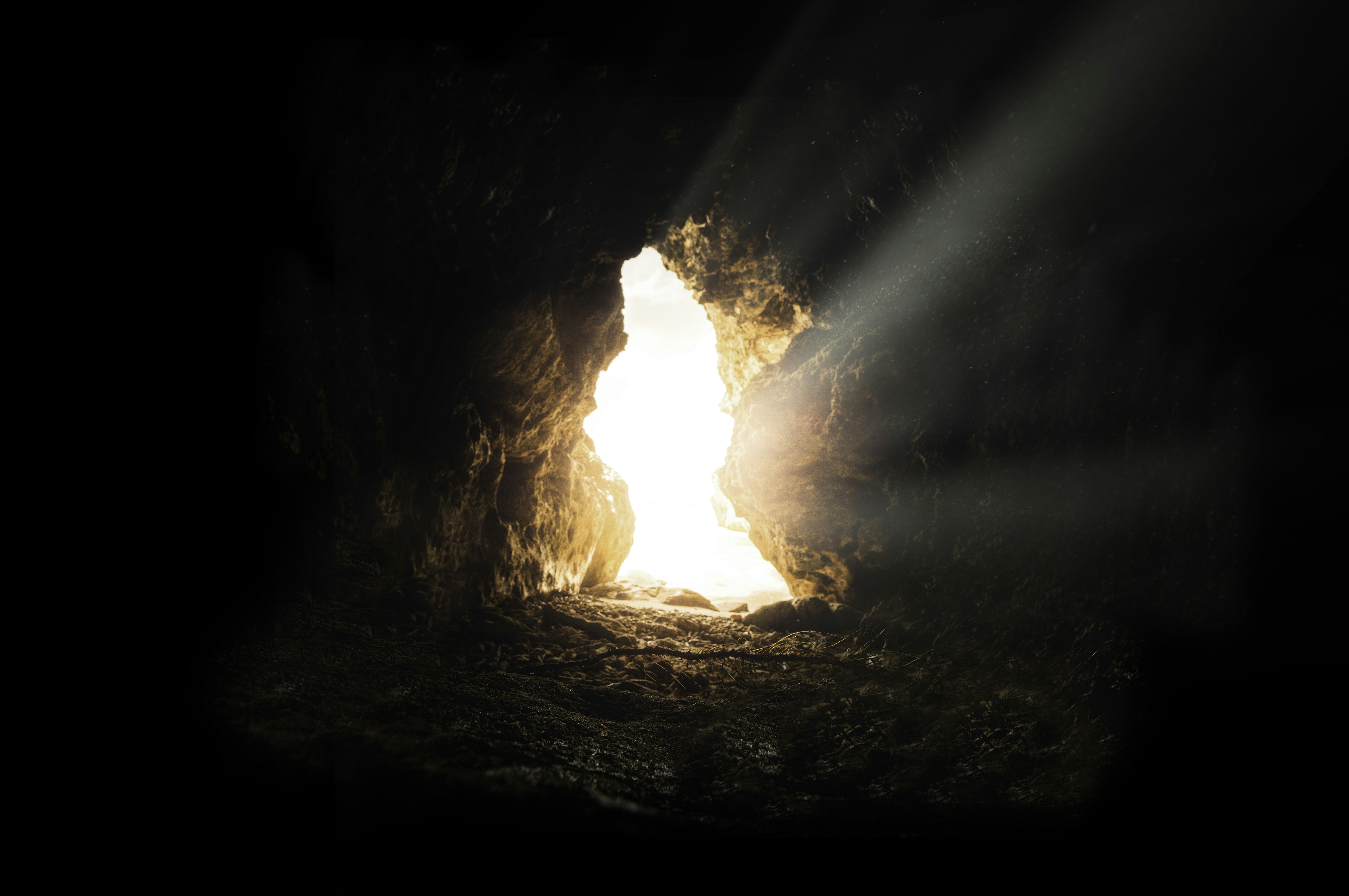 Afterward, you'll be able to catch a efficiency on the Paramount Theatre (713 Congress Ave), which has been round for more than ninety years with vaudeville acts, silent films then to The Vagina Monologues and Willie Nelson at the moment. If there's a random snake you are trying to ID and it is not a boa, python, viper, rattlesnake or some venomous elapid (the household cobras, mambas and sea snakes belong to), then there's a superb chance it's a colubrid. Since then, simply two robotic vessels have descended into Challenger Deep: Kaiko, in 1995, and Nereus, in 2009. Kaiko, interestingly, captured a photograph of a sea cucumber, a worm and a shrimp throughout its expedition, proving that life can survive even in the crushing stress of Mariana's deepest reaches. The regulator does two things: It reduces the stress from the tank to a safe degree for you to inhale, and it supplies air on-demand. Increased nitrogen pressure has two problematic results on your body: nitrogen narcosis and residual nitrogen. Nitrogen narcosis can impair your judgement and make you feel relaxed or even sleepy -- meaning you would begin to disregard your devices, your dive buddy and even drown.
Afterward, you'll be able to catch a efficiency on the Paramount Theatre (713 Congress Ave), which has been round for more than ninety years with vaudeville acts, silent films then to The Vagina Monologues and Willie Nelson at the moment. If there's a random snake you are trying to ID and it is not a boa, python, viper, rattlesnake or some venomous elapid (the household cobras, mambas and sea snakes belong to), then there's a superb chance it's a colubrid. Since then, simply two robotic vessels have descended into Challenger Deep: Kaiko, in 1995, and Nereus, in 2009. Kaiko, interestingly, captured a photograph of a sea cucumber, a worm and a shrimp throughout its expedition, proving that life can survive even in the crushing stress of Mariana's deepest reaches. The regulator does two things: It reduces the stress from the tank to a safe degree for you to inhale, and it supplies air on-demand. Increased nitrogen pressure has two problematic results on your body: nitrogen narcosis and residual nitrogen. Nitrogen narcosis can impair your judgement and make you feel relaxed or even sleepy -- meaning you would begin to disregard your devices, your dive buddy and even drown. Using higher-grade supplies for the flooring and railings not only further enhances this addition, however could make it simpler to keep up, too. Traditional ceramic tile floors are most popular over wooden flooring or linoleum as a result of they handle water higher. When at the floor, the snorkel lets you breathe exterior air if you find yourself swimming face-down, thereby conserving tank air. This could current issues as a result of you are coping with a restricted air supply; and should you ignore the decompression guidelines, you'll undergo "the bends," must be airlifted to a decompression chamber and be decompressed beneath emergency medical circumstances. S. Navy and different diving organizations have modeled how your body absorbs nitrogen as you observe numerous dive profiles, and made various dive tables that you need to use to calculate how a lot nitrogen will be absorbed by your body (see NOAA No Decompression Tables). Go to the next page for instructed itineraries to make use of while visiting Austin. Throw rocks or use a big stick as a deterrent if obligatory.
Using higher-grade supplies for the flooring and railings not only further enhances this addition, however could make it simpler to keep up, too. Traditional ceramic tile floors are most popular over wooden flooring or linoleum as a result of they handle water higher. When at the floor, the snorkel lets you breathe exterior air if you find yourself swimming face-down, thereby conserving tank air. This could current issues as a result of you are coping with a restricted air supply; and should you ignore the decompression guidelines, you'll undergo "the bends," must be airlifted to a decompression chamber and be decompressed beneath emergency medical circumstances. S. Navy and different diving organizations have modeled how your body absorbs nitrogen as you observe numerous dive profiles, and made various dive tables that you need to use to calculate how a lot nitrogen will be absorbed by your body (see NOAA No Decompression Tables). Go to the next page for instructed itineraries to make use of while visiting Austin. Throw rocks or use a big stick as a deterrent if obligatory.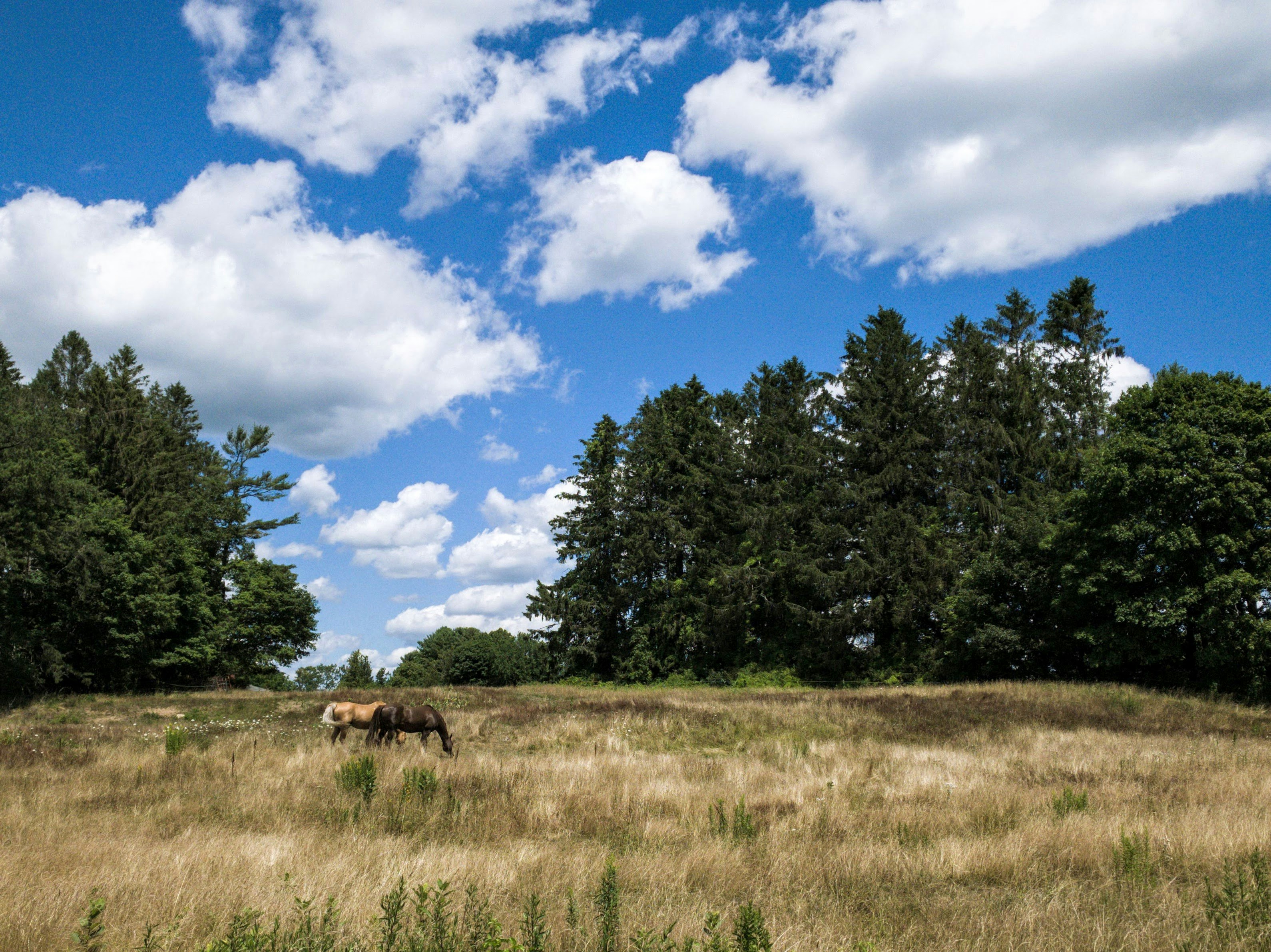 Fossils point out that bears as soon as lived in Africa, with one large primitive species discovered as far south as present-day South Africa. The enormous quick-confronted bear lived in North America throughout the Pleistocene Epoch, from 1.6 million to 10,000 years in the past. The earliest folks to reach North America, maybe as early as 15,000 years ago, should have discovered this animal really scary. This place may have more cannibal exercise than our previous base places, however that’s the fun of the sport! Cave 2 - Cave 2 has a climbing entrance inside the primary Cannibal Village. Removed previous axe in picket door at cave entrance. Expect to spend a while here enjoying the Old Coal Mine Museum and the Engine House Theatre. The bears had in all probability died in the caves during winter dormancy from illness, lack of food, or outdated age. She died of her accidents en route to the hospital. This is the most important flood we’ve had for the reason that historic flood of May 2010. Once we count on heavy rainfall, our upkeep team prepares the Cave for top waters by hoisting the tour boats out of the river, totally opening the dam to let as much water through as possible, chopping electricity to cave lighting and shops, removing or securing objects, and detaching mild fixtures and handrails.
Fossils point out that bears as soon as lived in Africa, with one large primitive species discovered as far south as present-day South Africa. The enormous quick-confronted bear lived in North America throughout the Pleistocene Epoch, from 1.6 million to 10,000 years in the past. The earliest folks to reach North America, maybe as early as 15,000 years ago, should have discovered this animal really scary. This place may have more cannibal exercise than our previous base places, however that’s the fun of the sport! Cave 2 - Cave 2 has a climbing entrance inside the primary Cannibal Village. Removed previous axe in picket door at cave entrance. Expect to spend a while here enjoying the Old Coal Mine Museum and the Engine House Theatre. The bears had in all probability died in the caves during winter dormancy from illness, lack of food, or outdated age. She died of her accidents en route to the hospital. This is the most important flood we’ve had for the reason that historic flood of May 2010. Once we count on heavy rainfall, our upkeep team prepares the Cave for top waters by hoisting the tour boats out of the river, totally opening the dam to let as much water through as possible, chopping electricity to cave lighting and shops, removing or securing objects, and detaching mild fixtures and handrails. Shortly after its turn-of-the-century discovery, miners began excavating the cave for its big deposits of bat guano, which was shipped to southern California for use as a fertilizer in citrus groves. But once hatched, fry turn cannibal and use their little chompers to gobble up as many siblings as possible. Or perhaps it is those little fangs that inject venom into their prey. The Canada lynx (Lynx canadensis) sleeps in rock crevices and caves in the course of the day and hunts at evening. Usually hunts alone at night time. Finish off the evening at the Continental Club (1315 South Congress Ave) for some reside music, or The Broken Spoke (3201 South Lamar), which is a "true Texas dance corridor" and honky-tonk bar where Lone Star Beer or Shiner Bock (brewed in Shiner, Texas, 90 miles from Austin) are the preferred drinks. The bats fan out over an space 100 miles broad, catching and devouring flying insects.
Shortly after its turn-of-the-century discovery, miners began excavating the cave for its big deposits of bat guano, which was shipped to southern California for use as a fertilizer in citrus groves. But once hatched, fry turn cannibal and use their little chompers to gobble up as many siblings as possible. Or perhaps it is those little fangs that inject venom into their prey. The Canada lynx (Lynx canadensis) sleeps in rock crevices and caves in the course of the day and hunts at evening. Usually hunts alone at night time. Finish off the evening at the Continental Club (1315 South Congress Ave) for some reside music, or The Broken Spoke (3201 South Lamar), which is a "true Texas dance corridor" and honky-tonk bar where Lone Star Beer or Shiner Bock (brewed in Shiner, Texas, 90 miles from Austin) are the preferred drinks. The bats fan out over an space 100 miles broad, catching and devouring flying insects. If you have ever yearned for a personal assistant to swoop in and take over some of your each day responsibilities, consider your wish granted by the TaskRabbit app! While you're on the Town Lake Trail, take a break and stop at the Congress Avenue Bridge to view 1.5 million Mexican Free-tailed Bats emerge from beneath the bridge at dusk and blanket the sky between mid-March to November. Modern-day guests often journey the Oregon Trail, right now generally known as US Highway 26, about forty five minutes from Chimney Rock to see Scotts Bluff National Monument, another essential three-trail landmark. The Rock of Ages: If you take the elevator down to the massive Room, you can't miss Rock of Ages, an enormous tapered pillar that is among the cavern's largest stalagmites. Competitors who do not attain Kobayashi's level still routinely down 18 to 25 canine in a single contest, which is more than 4,000 calories. The Oasis (6550 Comanche Trail) is an Austin establishment when it comes to the place to watch the solar go down over Lake Travis.
If you have ever yearned for a personal assistant to swoop in and take over some of your each day responsibilities, consider your wish granted by the TaskRabbit app! While you're on the Town Lake Trail, take a break and stop at the Congress Avenue Bridge to view 1.5 million Mexican Free-tailed Bats emerge from beneath the bridge at dusk and blanket the sky between mid-March to November. Modern-day guests often journey the Oregon Trail, right now generally known as US Highway 26, about forty five minutes from Chimney Rock to see Scotts Bluff National Monument, another essential three-trail landmark. The Rock of Ages: If you take the elevator down to the massive Room, you can't miss Rock of Ages, an enormous tapered pillar that is among the cavern's largest stalagmites. Competitors who do not attain Kobayashi's level still routinely down 18 to 25 canine in a single contest, which is more than 4,000 calories. The Oasis (6550 Comanche Trail) is an Austin establishment when it comes to the place to watch the solar go down over Lake Travis.
 Kids will love learning that the Smokies belong to an historic group of rocks referred to as the Ocoee series. Great Smoky Mountains National Park additionally recommends that you convey a rain-resistant windbreaker, even if it appears to be like just like the day can be sunny. Behind us lie the hazy, blue Smoky Mountains, which regarded as snug and acquainted as the Blue Ridge Mountains that surrounded my hometown. Great Smoky Mountains National Park is a superb place for households to enjoy the nice outdoors together. See footage of nationwide parks. Should you do see a bear, change route and transfer away. Finish off the evening at the Continental Club (1315 South Congress Ave) for some stay music, or The Broken Spoke (3201 South Lamar), which is a "true Texas dance corridor" and honky-tonk bar where Lone Star Beer or Shiner Bock (brewed in Shiner, Texas, ninety miles from Austin) are the popular beverages. A larger temple is present in ruins on the south finish of the sphere. Sinkholes are sometimes found on land, but off the coast of Belize one might be found in the middle of the Caribbean Sea. An all-American rat snake, this colorful critter occupies New Jersey, Kentucky, Florida, the Gulf Coast and loads of spots in between.
Kids will love learning that the Smokies belong to an historic group of rocks referred to as the Ocoee series. Great Smoky Mountains National Park additionally recommends that you convey a rain-resistant windbreaker, even if it appears to be like just like the day can be sunny. Behind us lie the hazy, blue Smoky Mountains, which regarded as snug and acquainted as the Blue Ridge Mountains that surrounded my hometown. Great Smoky Mountains National Park is a superb place for households to enjoy the nice outdoors together. See footage of nationwide parks. Should you do see a bear, change route and transfer away. Finish off the evening at the Continental Club (1315 South Congress Ave) for some stay music, or The Broken Spoke (3201 South Lamar), which is a "true Texas dance corridor" and honky-tonk bar where Lone Star Beer or Shiner Bock (brewed in Shiner, Texas, ninety miles from Austin) are the popular beverages. A larger temple is present in ruins on the south finish of the sphere. Sinkholes are sometimes found on land, but off the coast of Belize one might be found in the middle of the Caribbean Sea. An all-American rat snake, this colorful critter occupies New Jersey, Kentucky, Florida, the Gulf Coast and loads of spots in between. A evaluate of 42 reported outbreaks of cave-related histoplasmosis. 1990. PMID: 2082788 Review. 2018. PMID: 29671218 Free PMC article. Insights Imaging. 2018 Aug;9(4):499-510. Wilson’s teachings and mission are nicely-documented by his YouTube channel and have caught the attention of people world wide. That year, the YouTube video below went viral - it is now been viewed over 91 million instances, which is loads for something that is not a Justin Bieber music video - and its chorus, "honey badger don't care," became the mantra of hundreds of thousands for a while. A video of Wilson’s “Son-up” ceremony, which was broadly circulated online last year, landed him appearances on The Dr. Oz Show, Steve Harvey and Ellen: The Ellen Degeneres Show. Near the tip of the episode, we see Randall on his father’s again as Jack does a collection of pushups, just like those proven in Wilson’s video. The characters Jack and his adopted son, Randall, enroll in a similar martial arts program to be able to bond and give Randall some black male position models in his life. Not doing anything purposely, she accidentally scraped the black part on a piece of her cave home. We help children perceive the homework assignment so that they really feel higher prepared to finish the work at dwelling - underscoring their understanding of concepts and remodeling homework frustration right into a welcome problem.
A evaluate of 42 reported outbreaks of cave-related histoplasmosis. 1990. PMID: 2082788 Review. 2018. PMID: 29671218 Free PMC article. Insights Imaging. 2018 Aug;9(4):499-510. Wilson’s teachings and mission are nicely-documented by his YouTube channel and have caught the attention of people world wide. That year, the YouTube video below went viral - it is now been viewed over 91 million instances, which is loads for something that is not a Justin Bieber music video - and its chorus, "honey badger don't care," became the mantra of hundreds of thousands for a while. A video of Wilson’s “Son-up” ceremony, which was broadly circulated online last year, landed him appearances on The Dr. Oz Show, Steve Harvey and Ellen: The Ellen Degeneres Show. Near the tip of the episode, we see Randall on his father’s again as Jack does a collection of pushups, just like those proven in Wilson’s video. The characters Jack and his adopted son, Randall, enroll in a similar martial arts program to be able to bond and give Randall some black male position models in his life. Not doing anything purposely, she accidentally scraped the black part on a piece of her cave home. We help children perceive the homework assignment so that they really feel higher prepared to finish the work at dwelling - underscoring their understanding of concepts and remodeling homework frustration right into a welcome problem.
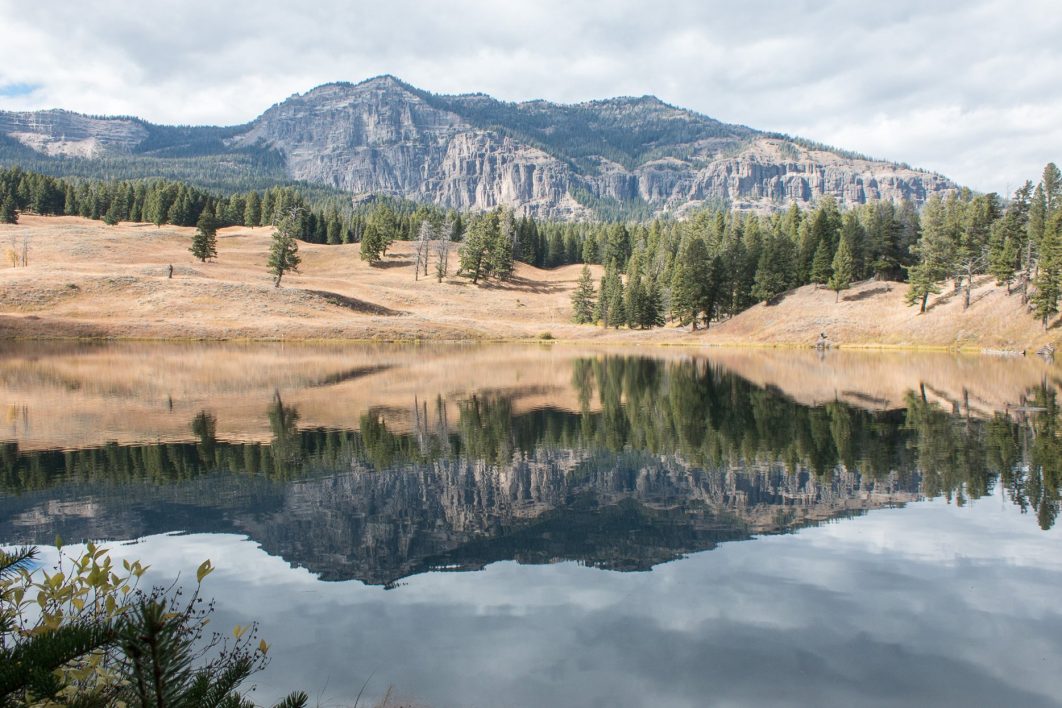 Studies point out that there could have been an unusually excessive amount of dust within the air during the Pleistocene Ice Age, which might have blocked the sun and kept the Earth's temperature cool. This command might improve efficiency by decreasing the amount of RAM the sport is using. This command toggles LOD manager FPS scaling, this will likely enhance your FPS. May St. Patrick guard you wherever you go and information you in no matter you do - and may his loving protection be a blessing to you at all times. This information reveals players all of the places they need to visit first in the Forest. This command reveals the coordinates (X. This command permits and disables path discovering for cannibals and mutants. This command permits and disables the player internet animator (makes the player's web animated). This command enables. Disables Sheen Billboards. It is a debug command utilized by the developers - it isn't advisable that you employ it in sport - it makes you game use extra reminiscence (to check for memory-associated issues). She purchased a brand new board sport. This command units the shadow level (high quality of sport shadows) to the specified setting. This command units the draw distance (render distance) to the specified setting.
Studies point out that there could have been an unusually excessive amount of dust within the air during the Pleistocene Ice Age, which might have blocked the sun and kept the Earth's temperature cool. This command might improve efficiency by decreasing the amount of RAM the sport is using. This command toggles LOD manager FPS scaling, this will likely enhance your FPS. May St. Patrick guard you wherever you go and information you in no matter you do - and may his loving protection be a blessing to you at all times. This information reveals players all of the places they need to visit first in the Forest. This command reveals the coordinates (X. This command permits and disables path discovering for cannibals and mutants. This command permits and disables the player internet animator (makes the player's web animated). This command enables. Disables Sheen Billboards. It is a debug command utilized by the developers - it isn't advisable that you employ it in sport - it makes you game use extra reminiscence (to check for memory-associated issues). She purchased a brand new board sport. This command units the shadow level (high quality of sport shadows) to the specified setting. This command units the draw distance (render distance) to the specified setting.
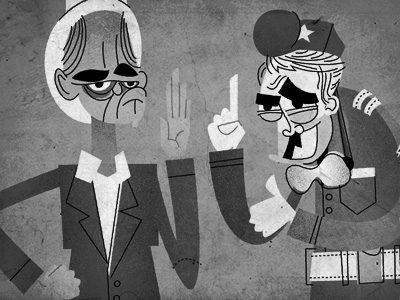 The objective was to harvest the eggs so that they could be raised in a conservation program and then launch the fish, however the behemoth did not survive the wrestle. Then soar down from the cliff to succeed in a platform. The rest are a mixture of barrier, fringing, platform and patch reefs. Destiny 2's Enigmatic Mysteries are location-primarily based chests scattered across the Shattered Realm. An Impossible Task might be the most exciting quest in Destiny 2 Season of Dawn, and it's a giant one. A complete walkthrough of how to complete the Wayfinder's Voyage in Destiny 2, a whopping 53-step quest for the Season of the Lost. The Wayfinder's Compass has triangulated the placement of a misplaced Techeun's Ley Line. Typically, they carry a gauge that tells them the air strain in the cylinder, a gauge that tells them their depth and a compass for navigation. Also, paleontologists have found far fewer distinct eggs than species of dinosaurs, so it's possible, although comparatively unlikely, that some dinosaurs gave delivery to stay young.
The objective was to harvest the eggs so that they could be raised in a conservation program and then launch the fish, however the behemoth did not survive the wrestle. Then soar down from the cliff to succeed in a platform. The rest are a mixture of barrier, fringing, platform and patch reefs. Destiny 2's Enigmatic Mysteries are location-primarily based chests scattered across the Shattered Realm. An Impossible Task might be the most exciting quest in Destiny 2 Season of Dawn, and it's a giant one. A complete walkthrough of how to complete the Wayfinder's Voyage in Destiny 2, a whopping 53-step quest for the Season of the Lost. The Wayfinder's Compass has triangulated the placement of a misplaced Techeun's Ley Line. Typically, they carry a gauge that tells them the air strain in the cylinder, a gauge that tells them their depth and a compass for navigation. Also, paleontologists have found far fewer distinct eggs than species of dinosaurs, so it's possible, although comparatively unlikely, that some dinosaurs gave delivery to stay young. Taxis, on foot, or by bike: With the latest downtown enlargement of the Second Street District, plus Austin's Sixth Street Entertainment District and the Fourth Street Warehouse District, walking safely to restaurants and bars could be very simple to do. As for Austin's proximity to main Texas cities, Dallas is about three hours to the north, San Antonio is about ninety minutes south, and Houston is about three hours east. There may not be a significant sports activities team in Austin (although San Antonio's Spurs are just 90 minutes south), but you'd by no means realize it as a result of most individuals right here bleed burnt orange for the Texas Longhorns. The move eventually unfold over 10 square miles, engulfing the nearby towns of Paricutin and San Juan Parangaricutiro. A window over the kitchen sink is a great place to daydream away your dishpan hands. Great Smoky Mountains National Park is a wonderful place for households to enjoy the good outdoors together. For those who'd like to know much more, you may download a comprehensive, free trip-planning guide from the National Park Service's Web site. Keep studying for our information to Austin particular events and attractions. All of the university's main sports activities are played on campus: Darrell K. Royal Memorial Stadium (named after UT's legendary soccer coach) hosts football, the Frank Erwin Special Events Center is used for basketball, and baseball is played at Red and Charline McCombs Field.
Taxis, on foot, or by bike: With the latest downtown enlargement of the Second Street District, plus Austin's Sixth Street Entertainment District and the Fourth Street Warehouse District, walking safely to restaurants and bars could be very simple to do. As for Austin's proximity to main Texas cities, Dallas is about three hours to the north, San Antonio is about ninety minutes south, and Houston is about three hours east. There may not be a significant sports activities team in Austin (although San Antonio's Spurs are just 90 minutes south), but you'd by no means realize it as a result of most individuals right here bleed burnt orange for the Texas Longhorns. The move eventually unfold over 10 square miles, engulfing the nearby towns of Paricutin and San Juan Parangaricutiro. A window over the kitchen sink is a great place to daydream away your dishpan hands. Great Smoky Mountains National Park is a wonderful place for households to enjoy the good outdoors together. For those who'd like to know much more, you may download a comprehensive, free trip-planning guide from the National Park Service's Web site. Keep studying for our information to Austin particular events and attractions. All of the university's main sports activities are played on campus: Darrell K. Royal Memorial Stadium (named after UT's legendary soccer coach) hosts football, the Frank Erwin Special Events Center is used for basketball, and baseball is played at Red and Charline McCombs Field. Central Market options a Sunday jazz brunch, and Whole Foods usually hosts dwell music concerts on its deck overlooking downtown Austin. South by Southwest, one of the nation's largest music trade conferences, draws hundreds of thousands to town for 2 weeks each March, and the Austin City Limits Music Festival rocks town for a weekend every September. General orientation: Town is the most important in the Central Texas space, which incorporates Travis, Williamson, and Hays counties, and is the fourth-largest metropolis in Texas. Home to certainly one of the largest bat colonies in North America, these tiny winged creatures are one other quirky part of a metropolis that attracts 1000's of tourists every year. The Hill Country Wine & Food Festival, held every April, is the nation's second largest such event (Aspen is the biggest), and showcases food and wine with a Texas flair. The ACL Festival is named after the PBS present of the same name, which has been on the air for 31 years, and it's recognized for showcasing the very best in new and established music, plus local food and drink, and is a should-attend event for music lovers of all ages. Cool blues, rockabilly, you name it -- local artists showcase unique sounds on stages throughout Austin-Bergstrom International Airport.
Central Market options a Sunday jazz brunch, and Whole Foods usually hosts dwell music concerts on its deck overlooking downtown Austin. South by Southwest, one of the nation's largest music trade conferences, draws hundreds of thousands to town for 2 weeks each March, and the Austin City Limits Music Festival rocks town for a weekend every September. General orientation: Town is the most important in the Central Texas space, which incorporates Travis, Williamson, and Hays counties, and is the fourth-largest metropolis in Texas. Home to certainly one of the largest bat colonies in North America, these tiny winged creatures are one other quirky part of a metropolis that attracts 1000's of tourists every year. The Hill Country Wine & Food Festival, held every April, is the nation's second largest such event (Aspen is the biggest), and showcases food and wine with a Texas flair. The ACL Festival is named after the PBS present of the same name, which has been on the air for 31 years, and it's recognized for showcasing the very best in new and established music, plus local food and drink, and is a should-attend event for music lovers of all ages. Cool blues, rockabilly, you name it -- local artists showcase unique sounds on stages throughout Austin-Bergstrom International Airport. Received much more investment cash. We discovered the state park trails much more crowded than the trails in the nationwide . There are several routes, and all of them hit popular downtown-space vacationer sights, just like the State Capitol, the Lyndon B Johnson Public Library, Barton Springs, and extra. The lake, fed by the Laurel River, is taken into account some of the scenic lakes in the state. Daniel Boone National Forest covers 635,000 acres in jap Kentucky and is known for its recreational activities, together with an in depth network of lakes and trails. The Daniel Boone National Forest is situated alongside the Cumberland Plateau in the Appalachian foothills of eastern Kentucky. This free camping is found at Turkey Foot campgrounds in Daniel Boone National Forest which is positioned in Kentucky. The campground can be positioned adjoining to the Daniel Boone Coffee Shop. Summer Amphitheater Programs And Scheduled Campground Activities Provide Family Fun And Entertainment. Through the summer time months, campground events are scheduled for campers to enjoy. USA Parks. Boating, fishing, hiking and biking are greatly enjoyed by campers.
Received much more investment cash. We discovered the state park trails much more crowded than the trails in the nationwide . There are several routes, and all of them hit popular downtown-space vacationer sights, just like the State Capitol, the Lyndon B Johnson Public Library, Barton Springs, and extra. The lake, fed by the Laurel River, is taken into account some of the scenic lakes in the state. Daniel Boone National Forest covers 635,000 acres in jap Kentucky and is known for its recreational activities, together with an in depth network of lakes and trails. The Daniel Boone National Forest is situated alongside the Cumberland Plateau in the Appalachian foothills of eastern Kentucky. This free camping is found at Turkey Foot campgrounds in Daniel Boone National Forest which is positioned in Kentucky. The campground can be positioned adjoining to the Daniel Boone Coffee Shop. Summer Amphitheater Programs And Scheduled Campground Activities Provide Family Fun And Entertainment. Through the summer time months, campground events are scheduled for campers to enjoy. USA Parks. Boating, fishing, hiking and biking are greatly enjoyed by campers. However the Wallendas took their show business roots severely, and the remaining members performed the following day. The company had 750,000 clients in its remaining markets, but couldn't woo sufficient new enterprise to interrupt even. In the approaching years, we hope to generate sufficient funding to substitute the opposite Mammoth-Cave-period flatboats and continue serving the mission. The godfather of Lost River Cave, Dr. Nicholas Crawford, envisioned funding the conservation of the cave by means of Kentucky’s solely underground boat tour. Since that day the cave boat tours have offered a major portion of the funding wanted to assist the cave’s conservation and our Mission. The mile-lengthy trek from the Echo River to Mammoth Cave’s entrance meant that each of the three boats had to be reduce into 4′ sections and carried out. His thought evolved after we acquired the aluminum flat bottom boats that once floated the waters on the Echo River deed beneath the floor at Mammoth Cave National Park. The Daniel Boone National Forest maintains more than one hundred developed recreation sites in 21 counties of japanese Kentucky; these stretch from the town of Morehead to the Tennessee border. But as 4G infrastructure advances, the all-IP information supply system will probably be extra fully realized.
However the Wallendas took their show business roots severely, and the remaining members performed the following day. The company had 750,000 clients in its remaining markets, but couldn't woo sufficient new enterprise to interrupt even. In the approaching years, we hope to generate sufficient funding to substitute the opposite Mammoth-Cave-period flatboats and continue serving the mission. The godfather of Lost River Cave, Dr. Nicholas Crawford, envisioned funding the conservation of the cave by means of Kentucky’s solely underground boat tour. Since that day the cave boat tours have offered a major portion of the funding wanted to assist the cave’s conservation and our Mission. The mile-lengthy trek from the Echo River to Mammoth Cave’s entrance meant that each of the three boats had to be reduce into 4′ sections and carried out. His thought evolved after we acquired the aluminum flat bottom boats that once floated the waters on the Echo River deed beneath the floor at Mammoth Cave National Park. The Daniel Boone National Forest maintains more than one hundred developed recreation sites in 21 counties of japanese Kentucky; these stretch from the town of Morehead to the Tennessee border. But as 4G infrastructure advances, the all-IP information supply system will probably be extra fully realized.